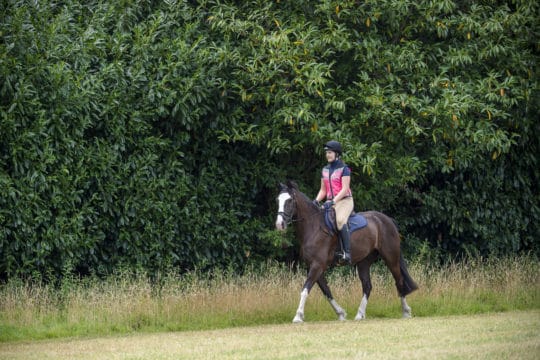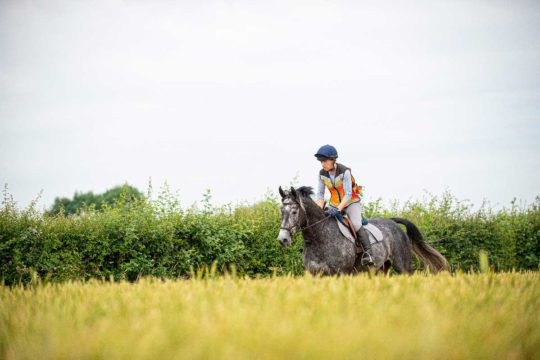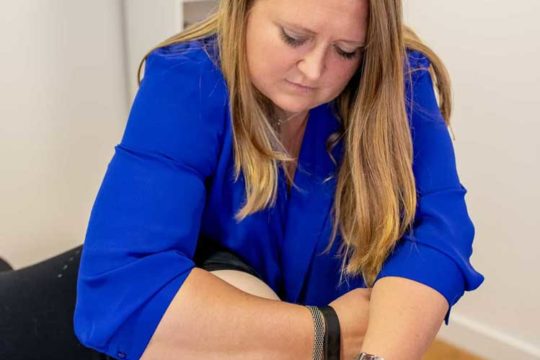Getting your horse fit is really important, but can be good fun, too. Horse&Rider has put together a go-to fitness guide for your horse
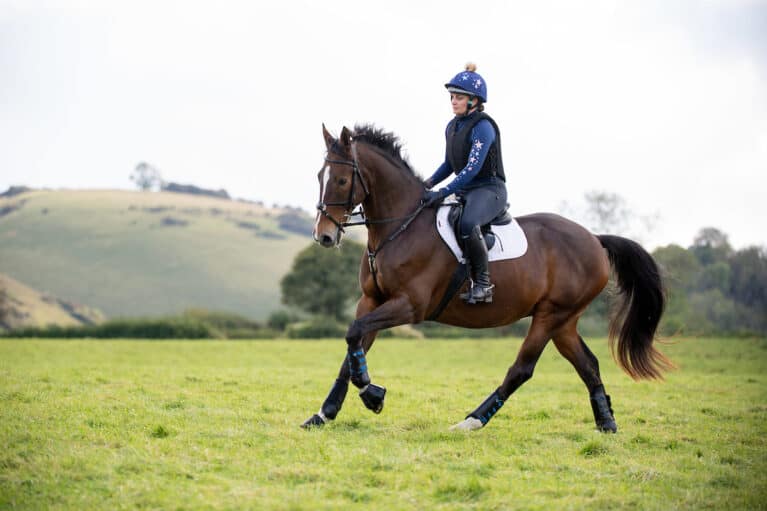
You don’t have to own an elite sport horse to be concerned about his fitness, because you need your horse to be able to perform at his best, regardless of what level you’re riding or competing at. A fitter horse is a healthier horse, who will be at lower risk of injury – what more could you want?
When planning a fitness programme, bear in mind that every horse will have a different starting level of fitness and every owner a different end goal, but the basis of health-related fitness is the same.
There are three main reasons why you train your horse…
- To increase his exercise capacity and the time to the onset of fatigue
- To improve his overall performance – endurance, speed, strength and skill
- To decrease the risk of injury
Planning your fitness programme
Getting the most out of your training programme requires planning, and the best programmes are built on the following principles…
Specificity – training must be specifically matched to the needs and demands of the activity you’re training your horse for. It must also be specific to him in terms of initial fitness levels, strengths and weaknesses.
Progression – start slowly and gradually increase the amount of exercise. It’s important not to progress too quickly as you may risk injury to him.
Overload – fitness can only be improved by an increase in training. Your horse must work harder to allow his body to adapt and improve. You can overload by varying the frequency, intensity or time of training.
Reversibility – adaptations that take place as a result of training will begin to reverse when your horse stops training. If your horse has a long break in training or isn’t trained often enough, he will lose fitness.
Rest and recovery – It’s important for your horse to have rest in his programme to allow his body to recover.
Tedium – use a variety of training methods – for example, schooling, hacking and jumping – to avoid you both becoming bored.
Measuring fitness
A great way to measure your horse’s fitness is to use a heart rate monitor. His heart rate will give you a good indication of how hard he is working. You can strap it around his trunk at the girth and under the saddle, and his heart rate will be displayed on a watch.
As a general rule, when your horse is working below 140bpm he is working aerobically, which means he is using oxygen to break down his energy sources and he can do this for long periods of time without fatiguing. Above this level (normally at a fast canter) he will start to work anaerobically, which is when his body doesn’t have time to use oxygen to release his energy because it requires the energy much faster. Obtaining energy in this way releases lactic acid into your horse’s muscles and he will begin to tire. However, as he becomes fitter, his aerobic capacity will increase, the point at which his body switches to working anaerobically will be delayed, and his recovery rates, overall fitness and stamina will improve.
Top tip
Keep a record of each training session and how your horse felt. This will show you his progress and help you to identify the cause of any problems.
12-week fitness plan
Before you start… This guide is designed to help you fitten a horse who has had 2–3 months off work, not as a result of injury. If your horse is recovering from an injury, discuss with your vet how you should bring him back into work. If your horse is already in work, you can start later in the programme. Read each week and if your horse would be capable of completing it with ease, move on to the next week.
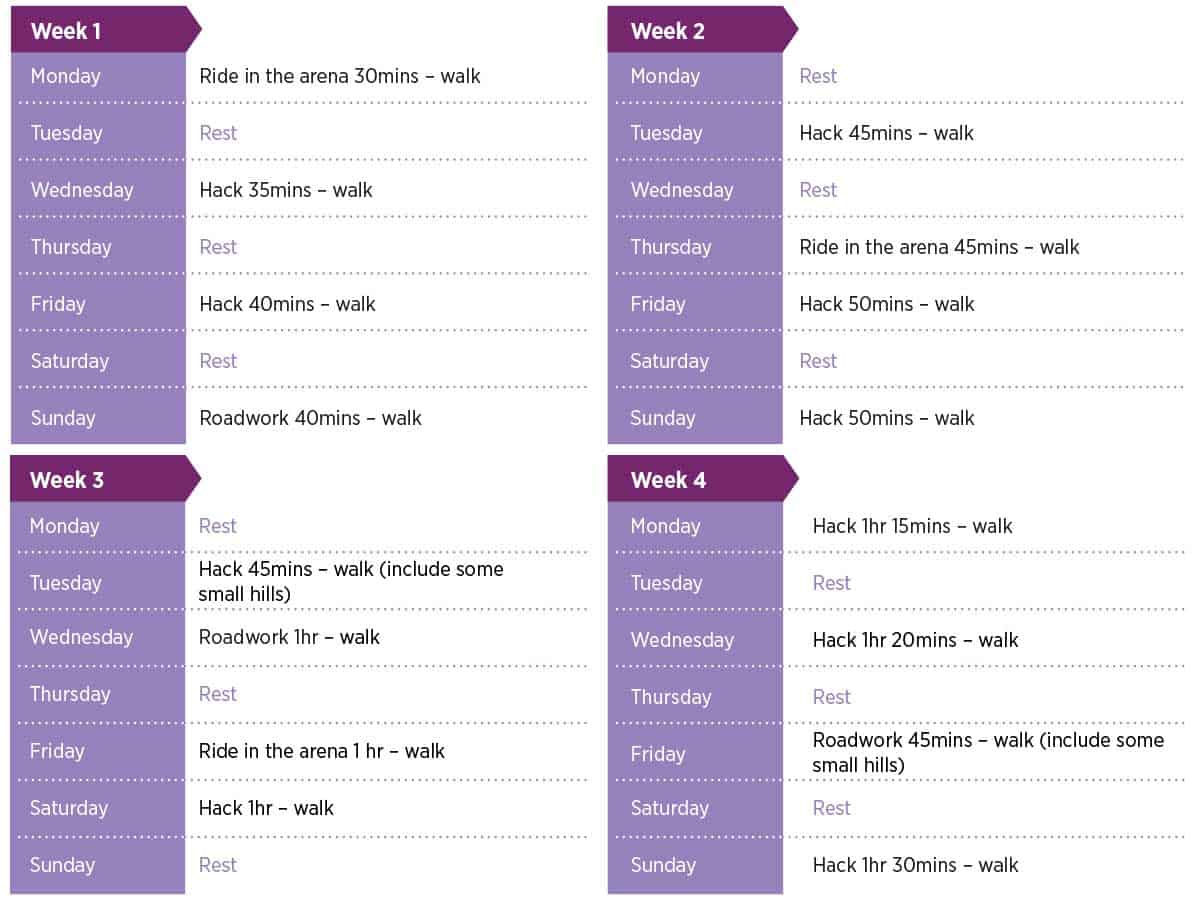
Stepping it up a level
Knowing when to increase your horse’s training is a balancing act. Too fast and you risk injury, too slow and he will make minimal improvement. Training should be increased slowly and gradually, but it still needs to challenge your horse’s body. Avoid introducing an increase in duration and intensity at the same time – first increase the duration of the activity, then reduce the duration when you start to increase the intensity, and finally build it back up so that your horse is then working harder and for longer.
Always keep in mind that fitness programmes are not one-size-fits-all, and what is right for one horse may not be most beneficial for another. Be guided by your horse and how he’s responding to training. If in doubt, slow down and
re-evaluate his progress.
Top tip
When you start to introduce short trots, begin with one or two minutes at a time and build up from there, using your horse to guide you. Likewise, when you start introducing canter, start off with short bursts and progress these to longer canters lasting a few minutes.
Types of training
There are a few types of training that you can use to increase your horse’s fitness, but the main two are continuous and interval training.
Continuous training is performed at a constant pace of low to moderate intensity and is the starting point for all horses in training. To begin with, this should be long, slow distance (LSD) work, which improves your horse’s endurance and oxygen uptake. The LSD phase can take anything from 3–12 months if you’re starting a young horse, but could only take one month if your horse is older and returning to work after an injury-free rest. LSD training can be achieved mostly by hacking, but you can combine it with work in an arena, lungeing and using a horse walker.
Over time, you can increase the duration and intensity of LSD work, but be sure to keep his heart rate below 140bpm. When your horse can work for an hour at walk, trot and canter at an average speed of 6–8kmph, you can begin to introduce interval training and move on to more discipline-specific training.
Interval training challenges your horse’s cardiovascular system with periods of speed activity, interspaced with slower recovery periods to allow his heart rate to return to slightly above normal before beginning the next speed phase. This incomplete recovery method means that each speed phase becomes progressively harder, challenging his body to strengthen and adapt to stress, making it better able to cope with exercise the next time it occurs.
As your horse’s fitness improves and he becomes accustomed to the routine, the intensity and number of speed phases can be increased, and the length of the partial recoveries decreased.
Top tip
Vary the terrain that your horse is working on – for example, arena surface, roadwork, soft and hard ground, and various degrees of incline – because it will improve his proprioception and allow his body to adapt to a variety of surfaces, which is particularly beneficial for his muscles, bones, tendons
and ligaments.
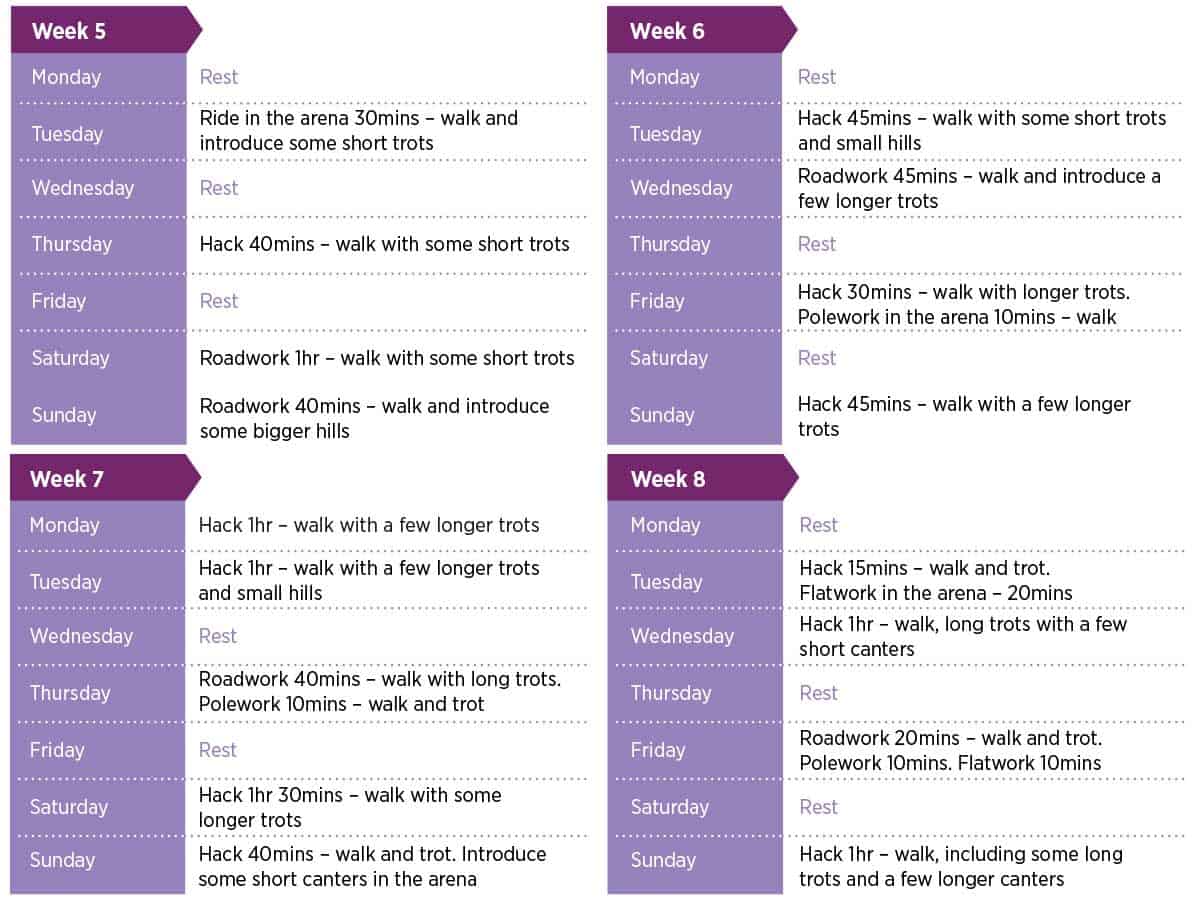
Effects of training
Any activity that increases the metabolic activity of muscles (the rate at which they are using energy) can be considered exercise. Although exercise always uses up energy, if it’s not well-planned and with a specific focus, it’s unlikely to result in an increase in fitness in the same way that training would.
Training brings about changes in your horse’s…
- cardiovascular system – the size of his heart muscle will increase, meaning it can pump more blood around his body with each heartbeat
- muscles – their ability to use oxygen efficiently improves
- skeleton – bone remodels in response to exercise, producing more bone where the stress is greatest and reducing bone where stress is less
- tendons and ligaments – these become stronger
- ability to recover – as he gets fitter, he will be able to recover from exercise much quicker
Bones, tendons and ligaments are much slower to adapt to the demands of training compared to the heart and muscles, and may be susceptible to injury, which is one reason why an initial period of LSD training is so important.
Did you know?
Horses detrain (lose their fitness) when their training ceases or decreases, however, they do so much slower than humans. Research has shown that even four months after a reduction of exercise intensity and volume, there is little change in measurable cardiovascular fitness.
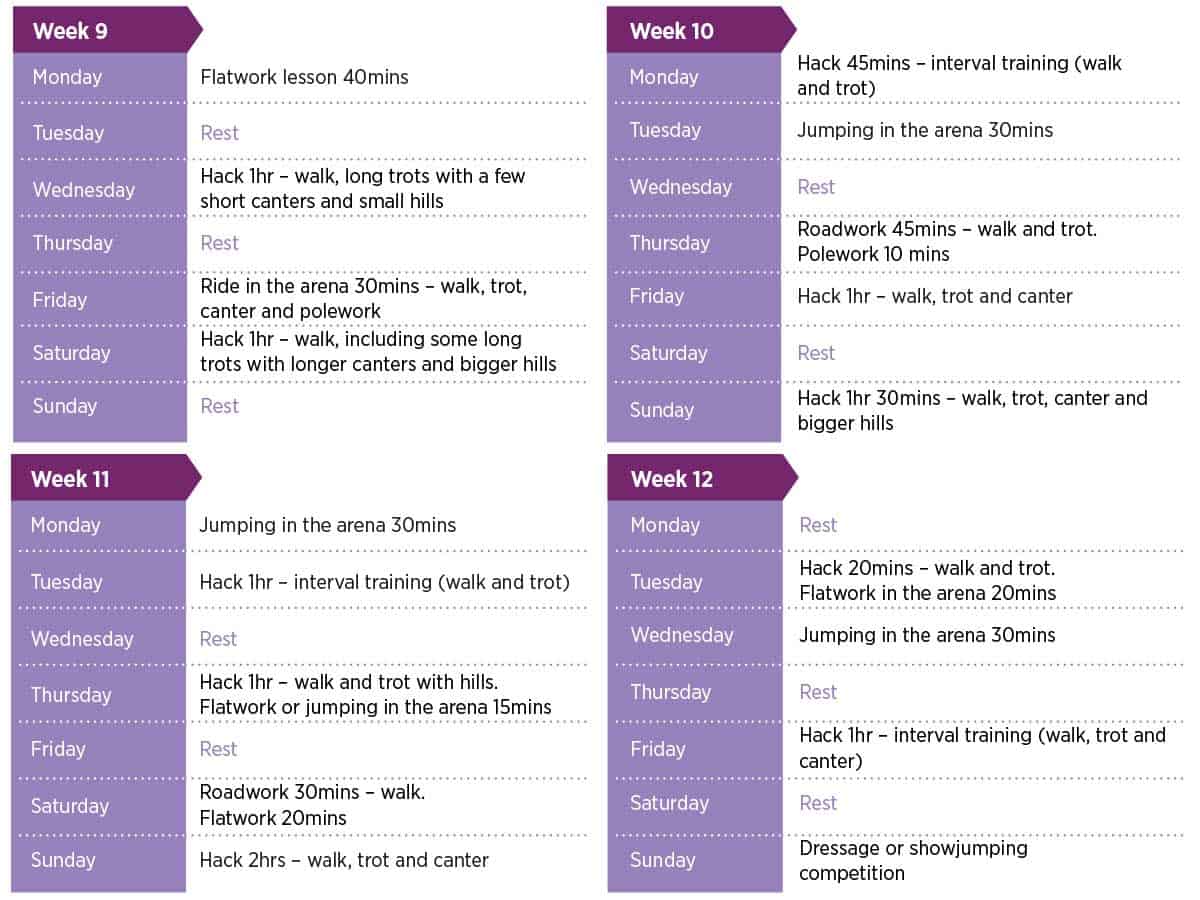
Quality over quantity
Spreading out training sessions is important because your horse’s body needs time to adapt to the stresses of physical training. Training day after day – for example, Friday, Saturday, Sunday, followed by four days of rest – is more likely to lead to injury and is less effective at increasing your horse’s fitness than quality exercise every other day.
Discipline-specific training
Every discipline requires your horse to be fit, but to excel in a specific discipline there are some particular areas that you will need to focus on. The needs of racehorses and endurance horses are obvious, as they are polar opposites, but other disciplines are quite different, too. Dressage horses need to be strong, supple and powerful to perform intricate movements, and showjumping training doesn’t mean only jumping enormously high obstacles – it’s about increasing explosive power and improving technique. Meanwhile, three-day eventing is the ultimate test of fitness, requiring the ability to delay fatigue, complete the cross-country and still have enough fuel left in the tank to be athletic in the showjumping.
Putting it all into practice
Remember that this fitness plan is a guide and during every session you need to consider whether your horse is ready to progress to the next stage of training. It doesn’t matter if it takes you an extra eight weeks to get to your goal, and it doesn’t matter if you can’t stick to the plan every day – as long as you’re not putting too much pressure and strain on your horse too soon or too many days in a row, you can mix it up and incorporate other types of training. Also, this plan will not produce a finished product, this is just to get you started. When you’ve completed your first goal, set another, and keep improving and maintaining your horse’s fitness.




